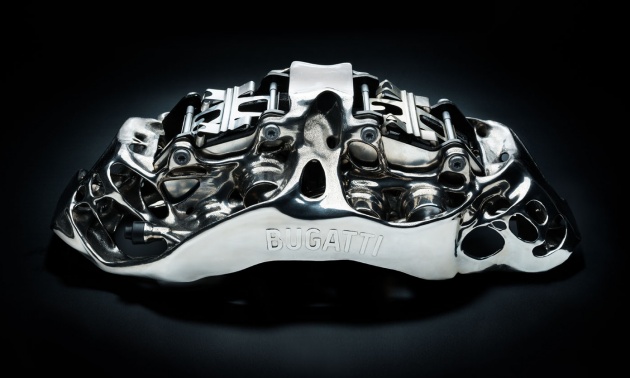Earlier this year, Bugatti announced that it will begin trialling its 3D-printed titanium brake calipers, which is a technological breakthrough – the new titanium caliper weighs 2.9 kg for dimensions of 41 cm long, 21 cm wide and 13.6 cm tall, representing a 40% weight reduction over the 4.9 kg aluminium alloy equivalent.
The scientific designation of the titanium alloy is Ti6AI4V, and it’s widely used in the aerospace industry for highly-stressed components such as for aircraft undercarriages, wings and engines. As a 3D-printed part, the material has a tensile strength of 1,250 N per square millimetre, also meaning that a force of 125 kg can be applied to a square millimetre of the titanium alloy before rupturing.
This new method of construction for brake calipers has been made possible by a high-performance 3D printer, which enables the use of titanium alloys such as the one used here for exceptional strength, performance and durability (the brake test here well exceeded 350 km/h!).
Volkswagen’s special 3D printer is currently the largest unit suitable for working with titanium, and is equipped with four 400-watt lasers. A total of 45 hours is elapsed in the printing of the Bugatti’s caliper, involving an additive manufacturing process. A total of 2,213 layers are required for this construction, which is then given heat treatment to ensure dimensional stability.
The automaker aims to make 3D printing a core process in its manufacturing phase, and will use 3D printers to mass produce car parts. Curious to see how this world’s first 3D-printed titanium brake caliper stacks up in a stress test? Watch the video above to find out. What do you think of this, folks?
Source: Read Full Article

